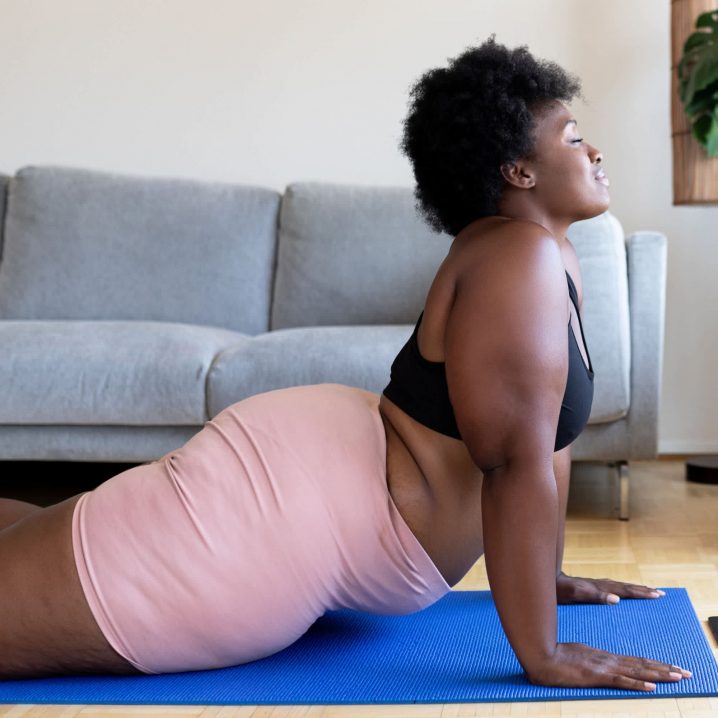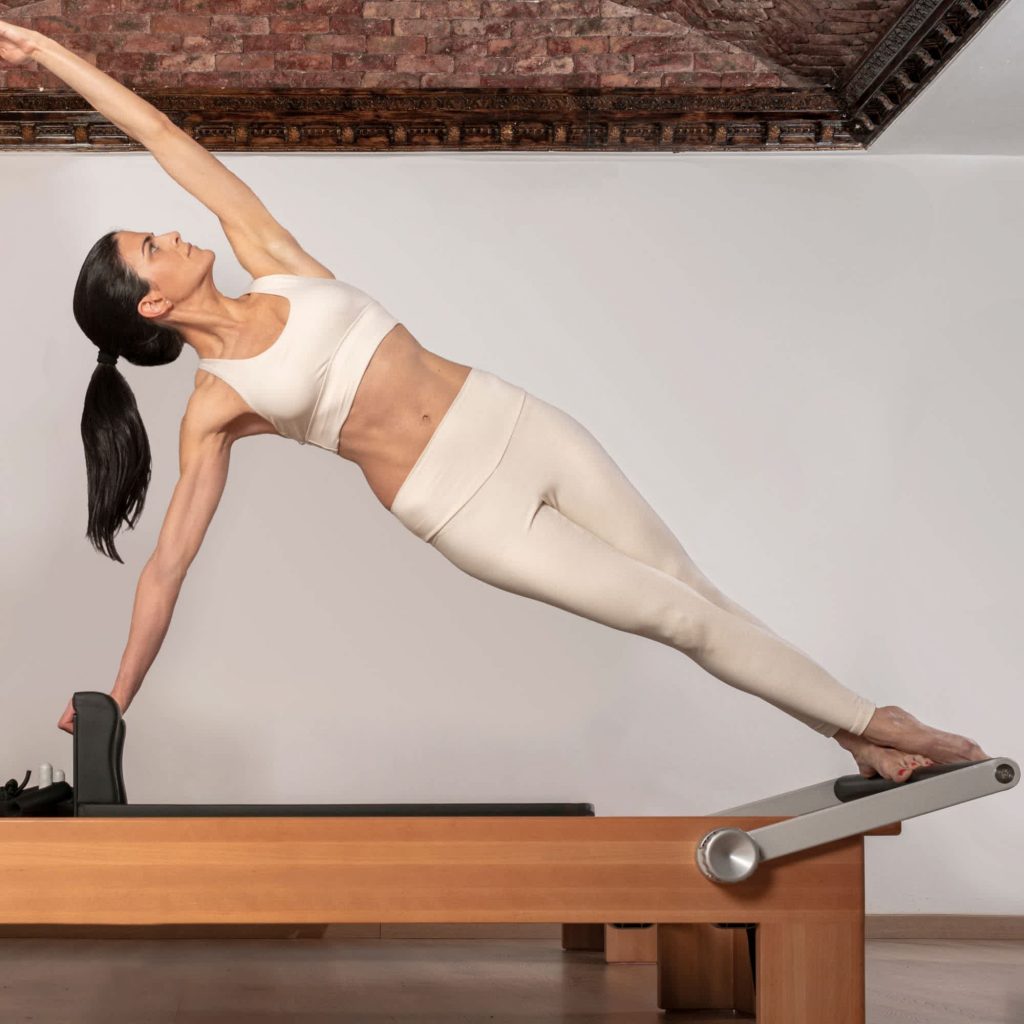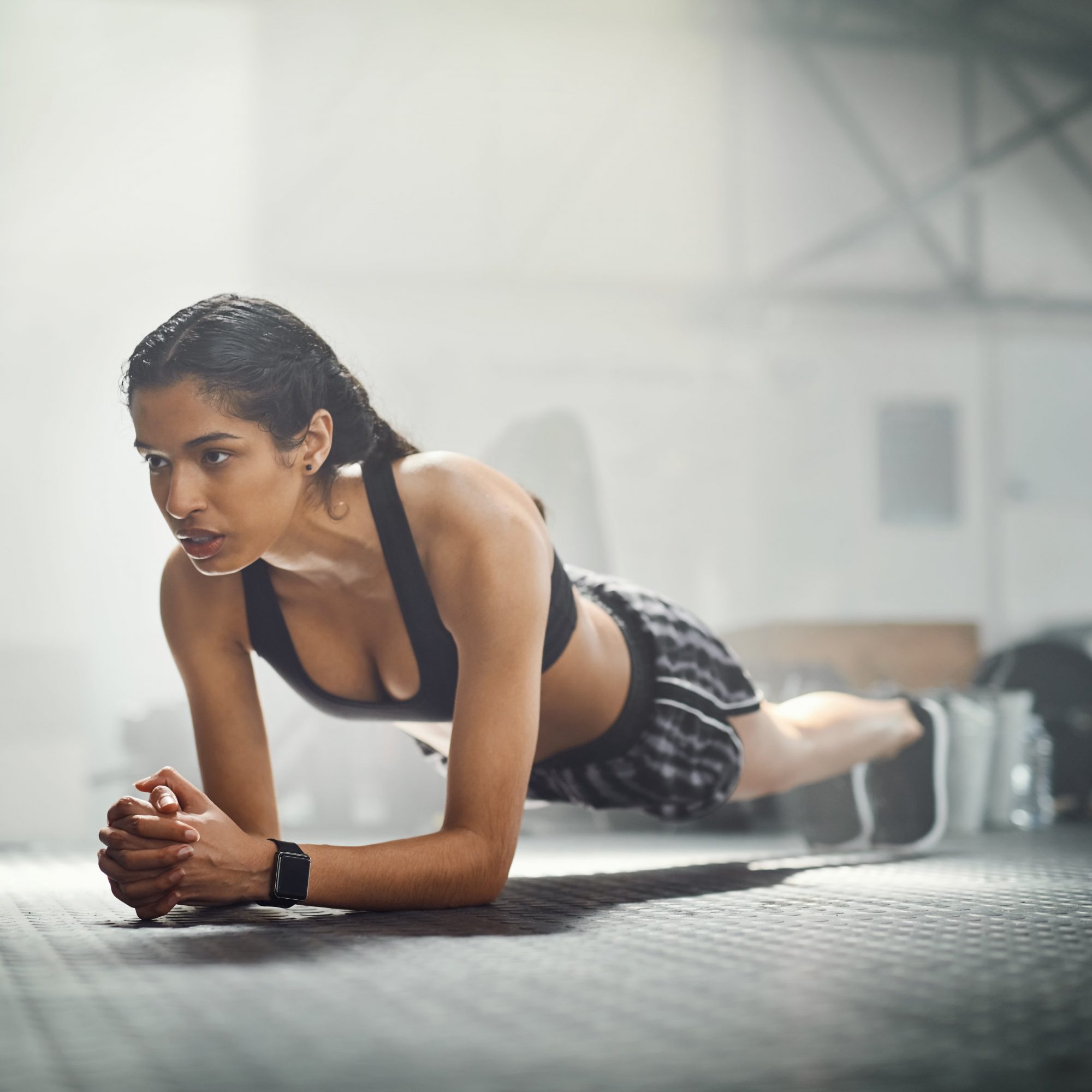
- POPSUGAR Australia
- Fitness
- Reformer or Mat Pilates: What’s the Better Workout?
Reformer or Mat Pilates: What’s the Better Workout?

Pilates has exploded in popularity over recent years — but which is the better workout? We spoke to a Pilates expert to understand the difference.
Do you feel like suddenly everyone you know is doing Pilates? Rima Alijew, founder of Trunk Studios, says you’re not wrong. “During Covid, mat Pilates was so accessible,” she says. “With videos online you could use cans and wine bottles to add weights, or purchase easily storable equipment. It was a really easy way to stay healthy at home.”
Where Did Pilates Start?
Pilates had its beginnings in a pandemic. During the outbreak of Spanish Flu in 1918, Joseph Pilates was a prisoner of war on the Isle of Man. Pilates was a fitness fanatic he passed the time helping the sick and injured recover with self-designed daily exercise regimes. He used makeshift equipment that would eventually become the first Pilates reformer machine. Released from imprisonment, Pilates headed to the US where he and his wife opened the first “body-conditioning gym” in 1926. The exercise was picked up by the ballet, as it provided essential strengthening and stretching for ballerinas. Now, we can find Pilates studios everywhere, from virtual workouts to in-person studios.
Alijew founded Trunk studios when she arrived in Australia. Having practiced Pilates in her home country Germany, she found many Sydney studios were large, and focused on classical Pilates (she says this has now changed). She wanted a studio space where instructors could pay attention to individual clients and attendees could have fun. She talks us through the health benefits of Pilates, the difference between mat and reformer and the best way to get started.
Why Is Pilates So Good for Us?
Mat or reformer, Pilates is addictive. Alijew says this is because it boosts the benefits of almost any kind of exercise you’ll do.
“A common misconception is that Pilates is just about core,” she says. “We actually work the whole body in Pilates, focusing on small muscle groups until they really burn. For each area you will do a minute of the same activity, that repetition is what creates strength and tone.”
Alijew says for new recruits the program, the first things they notice are balance and posture. “Some people say they feel taller. It helps with posture and back pain. A lot of people have pain or discomfort they might never go to a physio about, within two or three months for a lot of clients that pain is gone.” She agrees that there are also mental health benefits: “The focus on breath coupled with moment is a form of mindfulness – it engages the brain and floods the body with oxygen.”
The Difference Between Mat and Reformer Pilates
As an avid reformer Pilates fan, I’ve noticed over the years that Pilates devotees fall into two camps, reformer or mat. So which is best? Alijew says for new starters, she will usually recommend a few mat sessions.
“Most experts will tell you to start with mat because on the floor you can focus on breathing and movement without needing to think about straps and the many moving parts of a reformer,” she says.
Some find reformer more challenging as there are multiple components, straps for your arms and legs, springs with varying levels of intensity, an adjustable foot bar and a moving carriage. For the uninitiated, it can feel like learning to ride a bike (or a horse).

So, Is Reformer or Mat Pilates the Tougher Workout?
Well, it depends on your body. For many, after a few mat Pilates sessions, they may want to progress to reformer. “The reformer can allow you to intensify your work — you can add more springs for weight and components like straps benefit an arm workout,” Alijew says.
The moving carriage facilitates deeper stretches which improve flexibility and lengthening.
However, mat pilates can be seriously challenging. “With reformer the carriage supports your movement, so you can isolate just one muscle group,” Alijew explains. “With a mat you’re dependent on your body the whole time, engaging all muscle groups which some find fatiguing.”
Because of this, if you are more than 6 months pregnant, or have pre-existing injuries, reformer Pilates is the safest option. “Mat Pilates can be very hard on your wrists, on reformer the footbar will give you more support for a plank. Likewise, if you have neck issues there are adjustments we can make on reformer that will help you with crunches.”
If you are more than six months pregnant, reformer is always recommended. “I would never put pre-natal clients on the mat, as it is very uncomfortable,” Alijew says. “On a reformer bed, we can use wedges and make other adjustments so they can sit comfortably.”
The most important thing? Try both and see what you enjoy. Alijew says, the best type of the Pilates is the one that you’ll do regularly — “mostly because people won’t stick to an exercise they don’t enjoy.”
Getting Started With Pilates
Want to dip your toe into the world of Pilates? Whether it’s mat or reformer, Alijew recommends finding a studio with small group classes, at least for your first few sessions.
“I know a lot of new, complete beginners go to studios that are quite large. It is really concerning because often they come to us after they have hurt themselves in a big group class. When there are 30 people in the class it is very hard for the instructor to check you are doing the exercises correctly, and make modifications.”
Smaller studios are generally more expensive. If you’re budget conscious, Aljew recommends two to five small studio classes before joining a less expensive large group program.
“A lot of people who are new to Pilates need to develop their body awareness first,” she says. “Having a smaller class means you can learn the correct way to perform exercises, the correct breathing techniques and how your body responds.”


